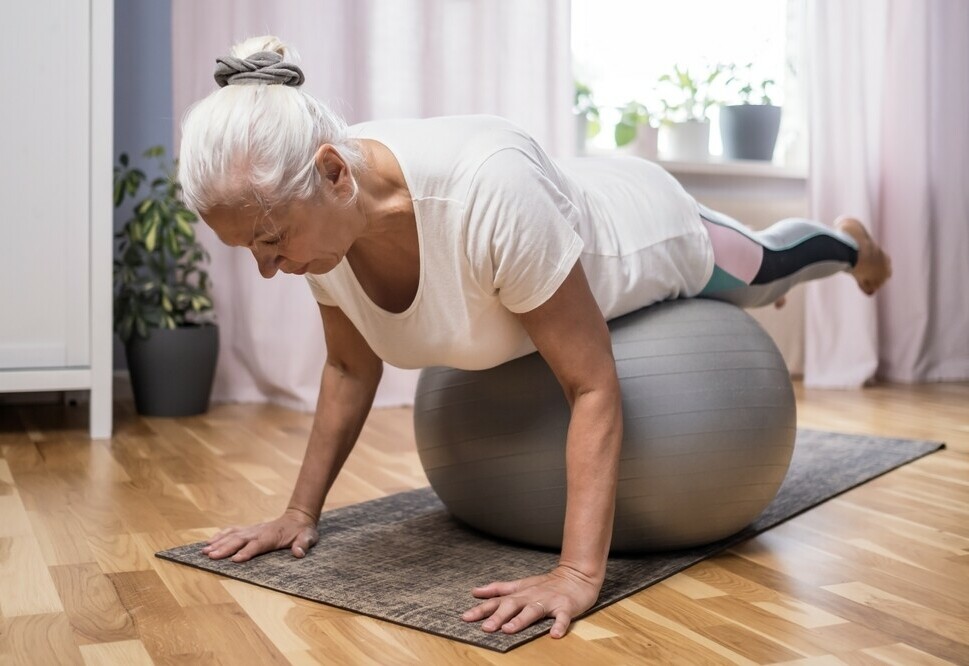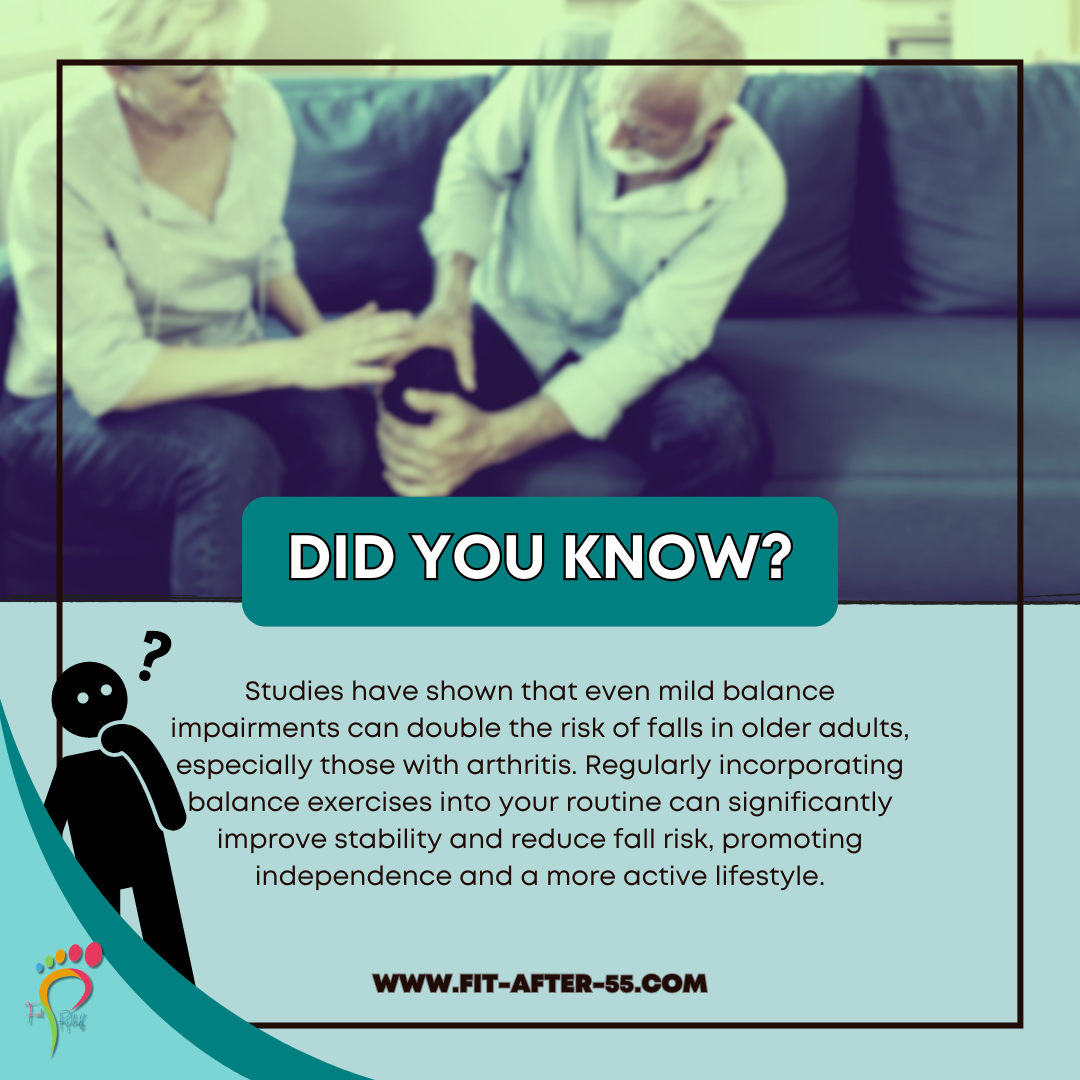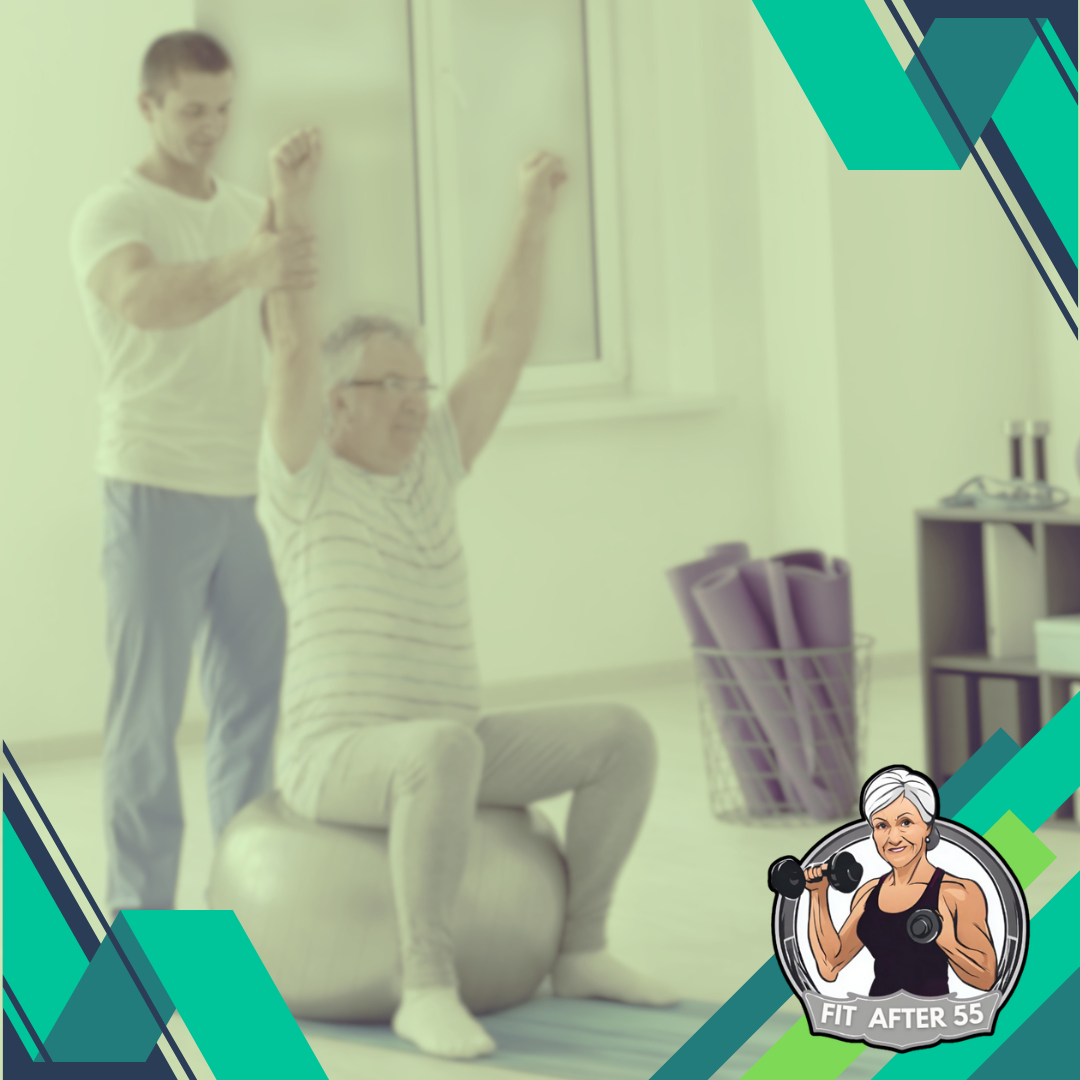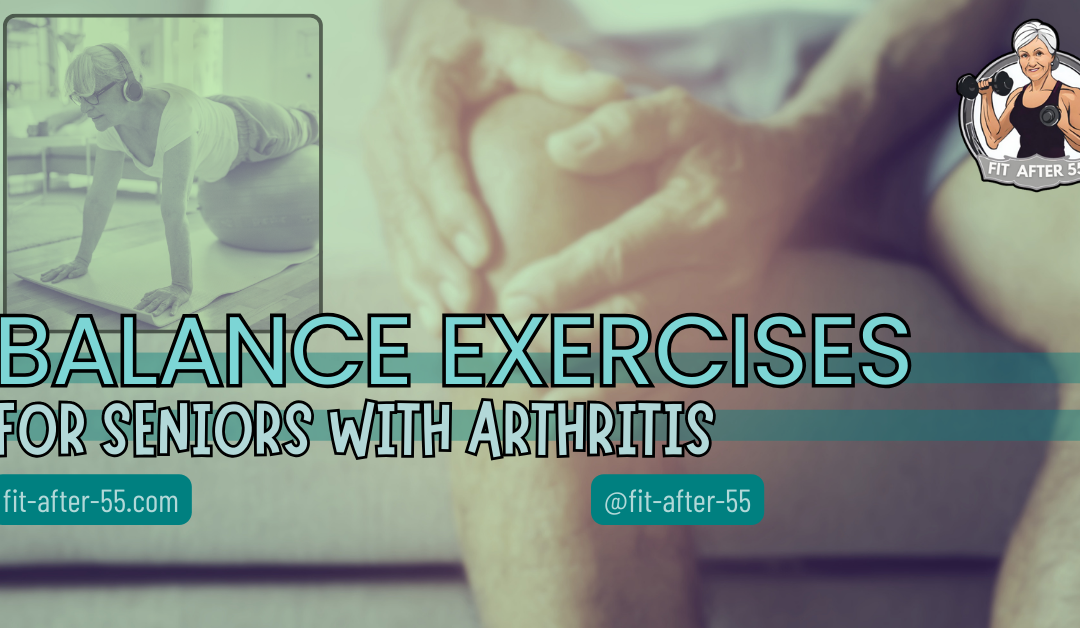Balance exercises for seniors with arthritis can feel like a double-edged sword. On one hand, they sound like a good idea for staying steady on my feet, but on the other, the thought of more movement when my joints are already grumbling isn’t exactly appealing. However, those toe taps I tried the other day while holding onto the kitchen counter felt surprisingly good, and maybe there’s more to this than meets the eye (or should I say, the achy knee?).
This article dives into the world of balance exercises for seniors with arthritis, exploring the benefits, safety precautions, and some exercises to get you started. So, let’s see if we can turn those wobbly moments into a confidence boost!
Balance Exercises for Seniors with Arthritis: Improving Mobility and Quality of Life
Arthritis isn’t just a single disease; it’s a term that covers over 100 different conditions affecting joints and their surrounding tissues. It’s prevalent among seniors, with many experiencing some form of arthritis as they age. This isn’t just about joint pain; arthritis can significantly hamper mobility and the ability to perform daily tasks, ultimately affecting a senior’s quality of life.

The most common type that seniors deal with is osteoarthritis, where the cartilage between bones wears away, leading to pain and stiffness. Another form, rheumatoid arthritis, is an autoimmune disorder that causes inflammation of the joint lining. These conditions can make movement challenging and even painful, but that’s where exercise comes into play.
You might think that exercise would be off-limits for those with joint issues, but it’s actually crucial. Regular activity can help manage weight, maintain muscle strength, and support joint health. More importantly, it can lead to improved function and reduced pain. That’s where balance exercises come in – they’re specially beneficial for seniors with arthritis.
Action Steps for Steadier Steps:
- Balance exercises are safe and beneficial for seniors with arthritis. They can strengthen muscles, improve joint health, and reduce fall risk.
- Always consult a doctor before starting any new exercise program. This is especially important for seniors with arthritis.
- Start slowly and listen to your body. There are many modifications you can make to balance exercises to make them easier or harder.
The Role of Balance Exercises in Managing Senior Arthritis
You’re going to find out about how balance exercises can be a game-changer for seniors grappling with arthritis. While arthritis can make movement challenging, engaging in exercises specifically designed to bolster balance has been shown to yield several benefits. These activities are gentle on the joints, making them ideal regardless of the severity of arthritis.

Benefits for Joint Health
Balance exercises are beneficial for maintaining and improving joint health because they help in strengthening the muscles around the joints. This additional support can alleviate the pressure on arthritic joints, potentially diminishing pain and increasing mobility. Moreover, regular movement can help in maintaining joint flexibility, which is crucial for those suffering from arthritis.
Enhancing Stability and Reducing Fall Risk
Improving coordination through balance exercises is essential for seniors. A better sense of stability means a lower risk of falls, which can be particularly dangerous for individuals with brittle bones due to arthritis. By enhancing balance, seniors can confidently conquer daily tasks with a minimized fear of tumbling over.
Non-Pharmacological Approach to Arthritis Management
Incorporating balance exercises into an arthritis management plan isn’t just about improving physical capabilities. It’s also about steering clear of aggressive treatments such as prolonged medication use with possible side effects. These exercises serve as a non-pharmacological method to address the struggles of arthritis, often complementing other treatment options prescribed by healthcare professionals.
Preparing for Balance Exercises: Safety First
I’m going to straight up say it: safety should always be your number one priority, especially when you’re dealing with arthritis. Jumping into any new exercise program without proper precautions can do more harm than good. That’s why you’ve got to take the time to get everything set up right.
You’re going to want to check in with your healthcare provider before starting any exercises. It’s not just a formality; it’s a crucial step. They can help you understand your specific condition and recommend the best exercises for your situation. Plus, they’ll let you know any limitations you should keep in mind.

Creating a safe exercise environment is just as essential. Choose a well-lit area with plenty of space to move around. Keep it clutter-free to avoid trip hazards. If you’re unsure about your balance, starting out with exercises you can do while seated or holding onto a sturdy chair or railing is a smart move.
Remember, everyone’s body is different, and your arthritis is unique to you. Customizing the exercises to match your abilities ensures you can benefit from the activity without overdoing it. Listen to your body. If something hurts in a way it shouldn’t, don’t push through the pain. Modify the activity or ask for alternative exercises that could be more comfortable for you.
Adapting exercises doesn’t mean you’re taking it too easy – it’s about being smart and focusing on long-term gains rather than short-term wins. Choose something that resonates with you, and you’ll be more likely to stick with it. Consistent practice is key to improving your balance and managing your arthritis symptoms.
Top Balance Exercises Suitable for Seniors with Arthritis
If you’re coping with arthritis, balance exercises can be a game changer. They strengthen muscles, support joint integrity, and help you stay agile. But remember, always start slowly and increase the difficulty as you become more comfortable and confident.

Gentle Lower Body Strengthening Exercises for Stability and Balance
The table below organizes each exercise for you, explaining where to start, how to perform the movements, and which muscles you’ll be working on.
| Exercise | Starting Position | Movement Description | Muscles Targeted |
|---|---|---|---|
| Seated Leg Extensions | Seated | While sitting on a sturdy chair, slowly extend one leg out straight and hold for a count of five, then lower it back down. Repeat with the other leg. | Quadriceps |
| Toe Taps | Seated | Tap your toes up and down on the floor from a seated position. | Calves and shins |
| Leg Lifts | Standing | Hold onto the back of a chair or countertop for balance, gently lift one leg to the side, then lower it back down. Alternate legs after each set. | Hip abductors and adductors |
| Weight Shifts | Standing | Stand with feet hip-width apart, shift weight to one side, lifting the other foot just off the ground. Hold, then move back to center and repeat. | Balance and coordination |
| Heel-to-Toe Walking | Standing/Walking | Walk in a straight line, placing the heel of one foot directly in front of the toes of the other foot. | Stability |
| Standing on One Foot | Standing | Use a chair or countertop for balance and lift one foot a bit off the floor. | Balance and minor muscle adjustments |

Integrating Balance Exercises into Daily Routines
If you want to reap the full benefits of balance training, it’s crucial to make these exercises a regular part of your life. Consistency is key, and here’s how you can create a routine that sticks.

Simple Steps to Incorporate Balance Exercises into Your Routine
| Step | Description |
|---|---|
| Start Small | Don’t spend hours each day; even a few minutes can make a difference. |
| Frequency | Aim to incorporate balance exercises three to four times a week. |
| Gradual Increase | Gradually increase the time as your strength and endurance improve. |
| Personal Connection | Choose exercises you’re comfortable with and that resonate with you to help stay motivated. |
| Flexibility | Don’t worry about creating the perfect exercise schedule. Life happens; get back to your routine as soon and as often as you can. |
| Integration | Integrate balance exercises into daily tasks (e.g., calf raises while washing dishes, balancing on one foot while brushing teeth) to stay active without feeling overwhelmed. |
| Tracking Progress | Keep a log of your exercise routine to track progress, notice improvements, and stay accountable. |
Remember, your first attempt doesn’t need to be your last. Be prepared to tweak your routine as needed. As your balance improves, or if certain movements become easier, challenge yourself with more advanced exercises.
Choose something that resonates with you from the exercises listed, and before you know it, you’ll be well on your way to improved balance and reduced joint pain.
Continued Support and Resources for Seniors with Arthritis
You’ve taken meaningful strides toward improving balance and managing your arthritis symptoms, but remember, you’re not in this alone. There’s a community and a wealth of resources out there to support you every step of the way.

Engaging with Online Communities
Online communities, especially those tailored for seniors with arthritis, can be a goldmine of encouragement and advice. In these spaces, you can share your experiences, celebrate your progress, and maybe even find new friends who understand exactly what you’re going through.
Seeking Professional Guidance
Don’t hesitate to reach out to physical therapists and fitness experts who specialize in senior health. These professionals can provide personalized guidance, help refine your exercise techniques, and ensure you’re getting the most out of your efforts while keeping safety in mind.
Utilizing Exercise Tools
In terms of tools, there are plenty of aids designed to assist you with balance exercises. From stability balls to resistance bands, these aids can add variety to your routines and help you challenge yourself at a comfortable pace.
Embracing an Active Lifestyle
In my opinion, maintaining an active lifestyle while managing arthritis might seem daunting at first, but by leveraging the right support and resources, you can enhance your well-being and continue to live life to the fullest. Choose something that resonates with you, and take it one step at a time. And I really hope that you find joy and improved health through your balance exercise journey.
Balance Exercises for Seniors with Arthritis: A Path to Steadier Steps
Remember those wobbly moments we mentioned in the beginning? By now, you’ve hopefully discovered that balance exercises for seniors with arthritis are more than just wishful thinking. We’ve explored the ways these exercises can strengthen muscles, improve joint health, and boost confidence, all while keeping safety at the forefront.

So, are you ready to ditch the fear of those wobbly moments and take control of your balance? The exercises we’ve covered are just a starting point. There’s a whole world of possibilities waiting for you, and with a little consistency, you might be surprised at what you can achieve.
Start slow, listen to your body, and most importantly, find exercises you enjoy. After all, a little fun goes a long way in sticking with any routine. Now, why not grab that sturdy chair and give those toe taps another try? You’ve got this!
Frequently Asked Questions
Is exercise safe for people with arthritis?
Absolutely! Exercise is a crucial part of managing arthritis. It strengthens muscles, improves joint health, and reduces pain. However, it’s important to consult your doctor before starting any new exercise program, especially if you have limitations.
Will these exercises hurt my joints?
The exercises listed in this article are gentle and designed for people with arthritis. They focus on improving balance without putting strain on your joints. It’s important to listen to your body and modify exercises if you feel any pain.
How often should I do these exercises?
Aim for 3-4 times a week, even if it’s just for a few minutes each time. Consistency is key! Gradually increase the duration of your workouts as you get stronger.
What if I can't balance on one leg?
That’s okay! Many exercises can be done while seated or holding onto a chair for support. Focus on exercises you can comfortably perform and gradually increase the difficulty as you improve.
Stay Steady, Stay Strong: Your Guide to Senior Fitness!
Ready to conquer your wobbly moments and live life to the fullest? Visit our website [fit-after-55.com] for engaging articles, helpful product reviews, and a supportive community.
Join our Facebook group (https://www.facebook.com/profile.php?id=61557390788711) to connect with fellow fitness enthusiasts and senior caregivers – together, we can thrive!

